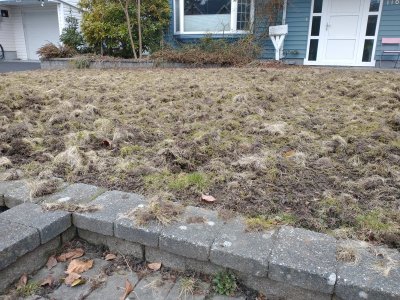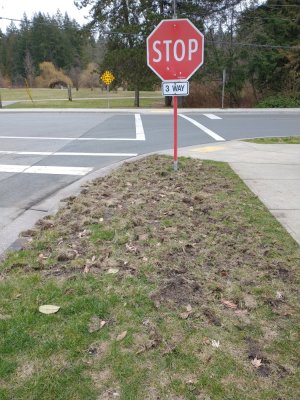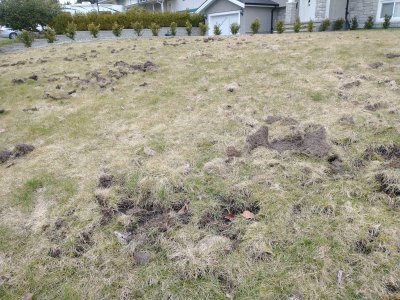Branching Out
Garden Addicted
Not sure if any of you have this pest where you live, but European Chafer Beetles showed up in our area about 20 years ago and they have been reeking havoc ever since. The adults look like small brown flying humbug candies, resembling a moth when in flight. In June they swarm around our Ginkgo tree, or along the edge of our roof. If there are a lot of them it can be quite creepy to hear their wings flapping against the Ginkgo leaves. They lay eggs in lawns, and then in September when the eggs become grubs racoons, skunks, and crows come to dine on them--thrashing the lawn in the process. You never know who's lawn will be hit. When I was out walking today there was a lot of crow activity, and a few patches of grass that were just decimated.



